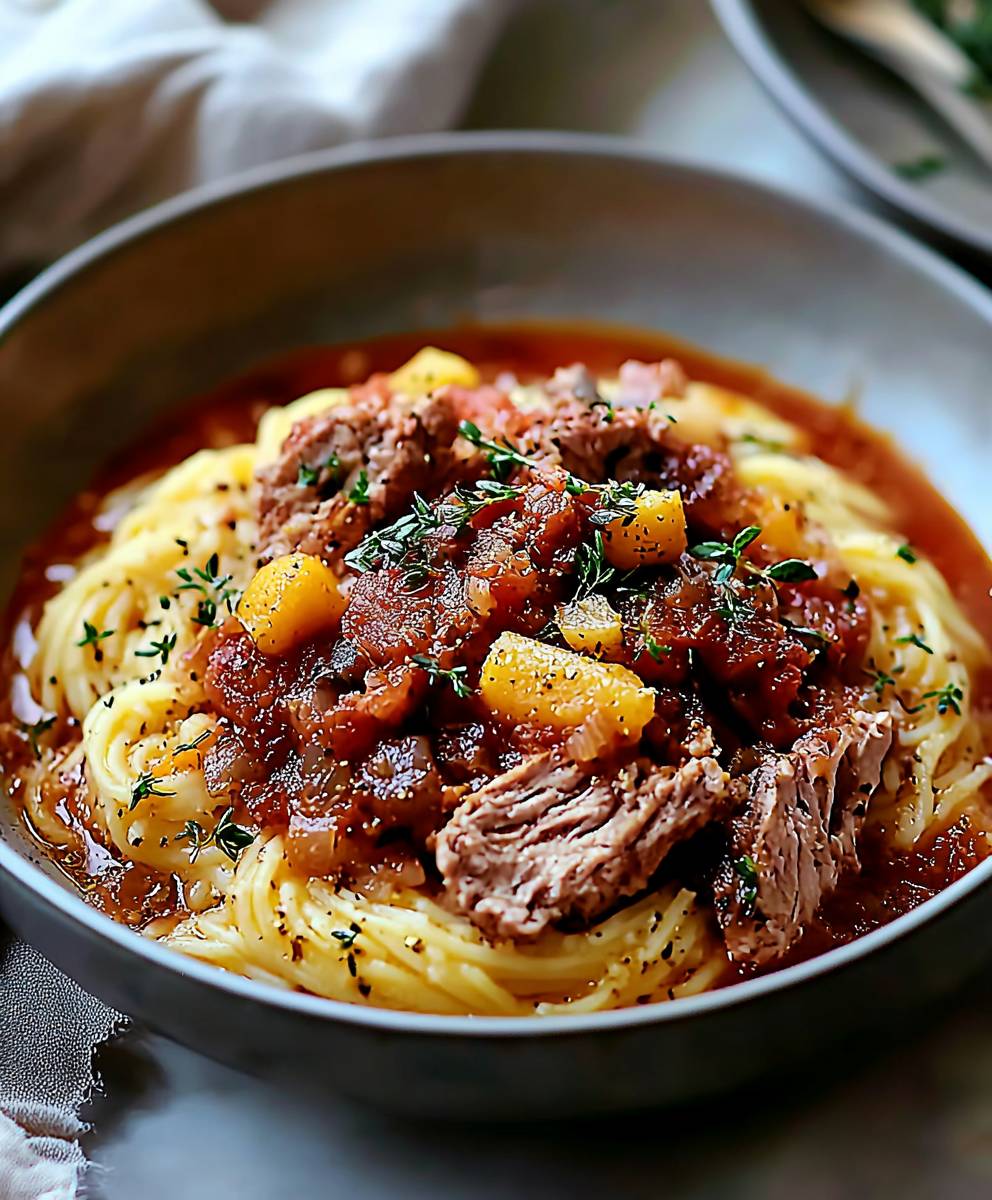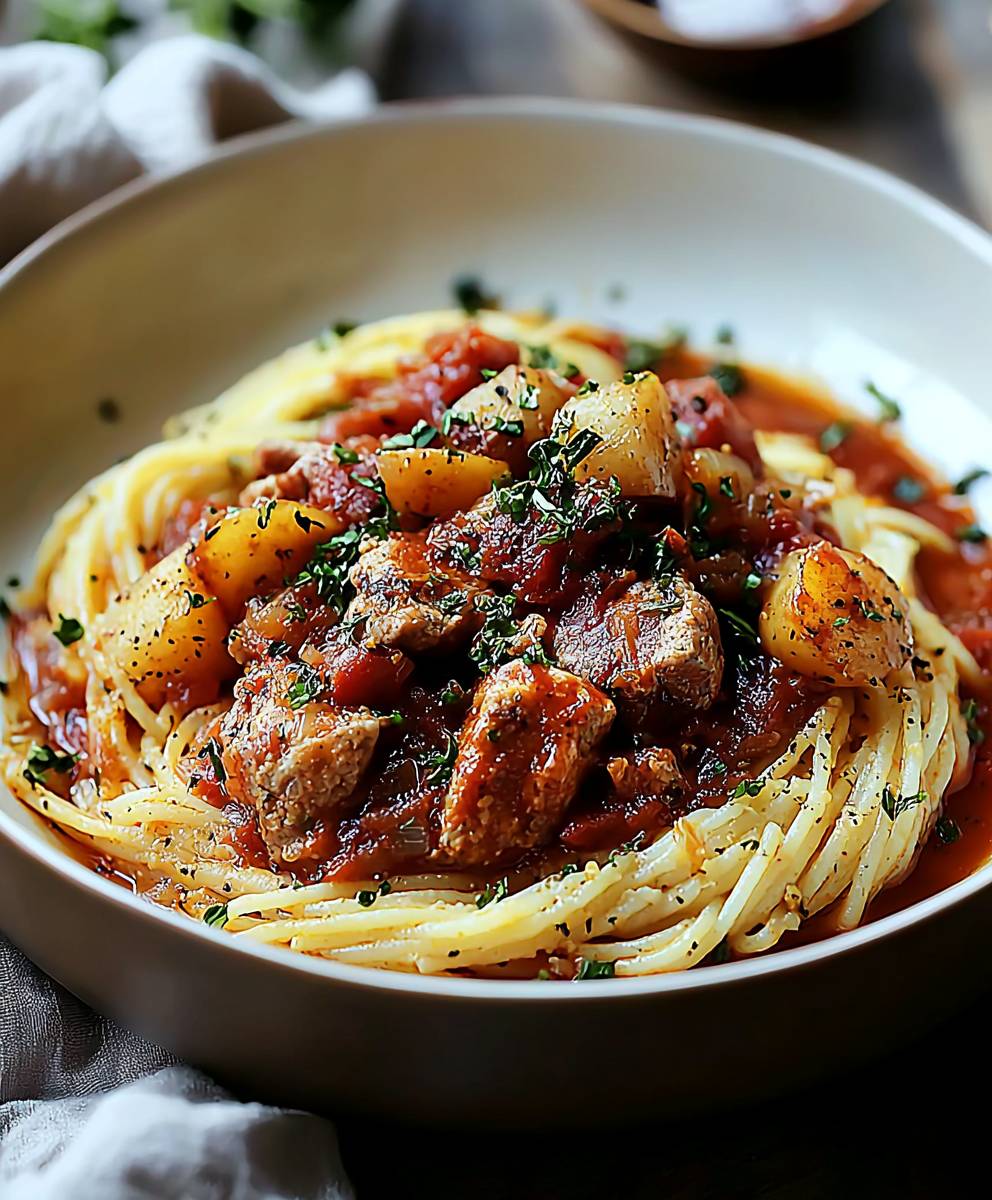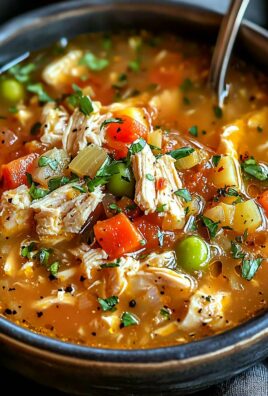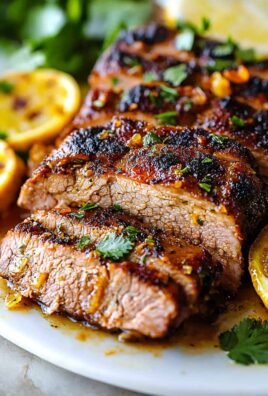Italian comfort food: is there anything more soul-satisfying on a chilly evening? I think not! Imagine twirling a forkful of perfectly cooked pasta, coated in a rich, savory sauce that warms you from the inside out. Or perhaps sinking your teeth into a slice of crispy-edged, cheesy lasagna, layered with love and brimming with flavor. These are the dishes that evoke memories of family gatherings, cozy kitchens, and the simple pleasures of life.
Italian cuisine, with its roots stretching back centuries, is more than just food; it’s a celebration of tradition and connection. Many of the dishes we consider Italian comfort food today were born out of necessity, utilizing simple, readily available ingredients to create hearty and nourishing meals for families. Think of the resourcefulness behind dishes like pasta e fagioli (pasta and beans) or polenta, transforming humble ingredients into culinary masterpieces.
But why do we crave these dishes so much? It’s the perfect combination of flavors and textures, of course! The creamy richness of a risotto, the satisfying chew of homemade gnocchi, the tangy sweetness of a perfectly balanced tomato sauce – these are the elements that make Italian food so irresistible. Beyond the taste, it’s the feeling of warmth and nostalgia that these dishes evoke. They’re a reminder of simpler times, of shared meals, and of the love that goes into every bite. So, let’s dive into the world of Italian comfort food and discover some recipes that will bring joy to your table and warmth to your heart!
Ingredients:
- For the Pasta Dough:
- 400g (about 3 cups) all-purpose flour, plus more for dusting
- 4 large eggs
- Pinch of salt
- 2 tablespoons olive oil (optional, but adds richness)
- For the Bolognese Sauce:
- 500g (about 1.1 lbs) ground beef (or a mix of beef and pork)
- 1 large onion, finely chopped
- 2 carrots, finely chopped
- 2 celery stalks, finely chopped
- 2 cloves garlic, minced
- 2 tablespoons olive oil
- 150g (about 5 oz) pancetta, diced (optional, but highly recommended)
- 200ml (about ¾ cup) dry red wine
- 400g (14 oz) canned crushed tomatoes
- 200g (7 oz) tomato paste
- 500ml (about 2 cups) beef broth
- 1 teaspoon dried oregano
- 1 teaspoon dried basil
- 1 bay leaf
- Salt and freshly ground black pepper to taste
- 1/2 cup whole milk (optional, for added richness)
- For the Béchamel Sauce:
- 75g (about 5 tablespoons) butter
- 75g (about ½ cup) all-purpose flour
- 1 liter (about 4 cups) whole milk, warmed
- Pinch of nutmeg
- Salt and white pepper to taste
- For Assembling the Lasagna:
- 250g (about 9 oz) fresh mozzarella, sliced
- 150g (about 5 oz) grated Parmesan cheese
- Fresh basil leaves for garnish (optional)
Making the Fresh Pasta (Optional, but Recommended!)
Okay, let’s get started with the pasta! If you’re short on time, you can definitely use store-bought lasagna sheets. But trust me, homemade pasta takes this dish to a whole new level. It’s a labor of love, but so worth it!
- Create the Dough: On a clean work surface, mound the flour. Make a well in the center, like a volcano. Crack the eggs into the well, add the salt, and drizzle in the olive oil (if using).
- Combine the Ingredients: Using a fork, gently whisk the eggs, gradually incorporating the flour from the inside walls of the well. Continue until a shaggy dough forms.
- Knead the Dough: Once the dough comes together, start kneading it with your hands. Knead for about 8-10 minutes, until the dough is smooth, elastic, and no longer sticky. If the dough is too dry, add a teaspoon of water at a time. If it’s too sticky, add a little flour.
- Rest the Dough: Wrap the dough tightly in plastic wrap and let it rest at room temperature for at least 30 minutes, or up to an hour. This allows the gluten to relax, making it easier to roll out.
- Roll Out the Pasta: After the dough has rested, cut it into four equal pieces. Flatten one piece into a disc. Using a pasta machine, start with the widest setting and gradually decrease the setting, rolling the dough thinner and thinner each time. Fold the dough in half after each pass through the machine for the first few settings to help develop the gluten. Aim for a thickness of about 1/16 inch (setting 6 or 7 on most machines).
- Cut the Lasagna Sheets: Cut the rolled-out pasta into sheets that are slightly smaller than your baking dish. You can use a pizza cutter or a sharp knife.
- Dry the Pasta (Optional): If you’re not using the pasta immediately, you can dry it slightly by laying the sheets on a clean kitchen towel or a pasta drying rack for about 30 minutes. This will prevent them from sticking together when you layer the lasagna.
Preparing the Bolognese Sauce
Now for the heart and soul of this lasagna – the Bolognese sauce! This is where the magic happens. Don’t rush this step; the longer it simmers, the richer and more flavorful it will become.
- Sauté the Vegetables: In a large, heavy-bottomed pot or Dutch oven, heat the olive oil over medium heat. Add the onion, carrots, and celery and cook until softened, about 8-10 minutes. This is called a “soffritto” and it’s the foundation of many Italian sauces.
- Add the Pancetta and Garlic: Add the diced pancetta (if using) and cook until it’s rendered some of its fat and is slightly crispy, about 5 minutes. Add the minced garlic and cook for another minute, until fragrant. Be careful not to burn the garlic!
- Brown the Meat: Add the ground beef (or beef and pork mixture) to the pot and break it up with a spoon. Cook until the meat is browned all over, about 8-10 minutes. Drain off any excess fat.
- Deglaze with Wine: Pour in the red wine and scrape up any browned bits from the bottom of the pot. Let the wine simmer for a few minutes, until it’s almost completely evaporated. This adds depth of flavor to the sauce.
- Add the Tomatoes and Seasonings: Stir in the crushed tomatoes, tomato paste, beef broth, oregano, basil, and bay leaf. Season with salt and pepper to taste.
- Simmer the Sauce: Bring the sauce to a simmer, then reduce the heat to low, cover the pot, and let it simmer for at least 2-3 hours, or even longer if you have the time. The longer it simmers, the more the flavors will meld together. Stir occasionally to prevent sticking.
- Add Milk (Optional): About 30 minutes before the end of the simmering time, stir in the milk (if using). This will add richness and creaminess to the sauce.
- Adjust Seasoning: Before using the sauce, remove the bay leaf and taste it. Adjust the seasoning with salt and pepper as needed.
Making the Béchamel Sauce
Béchamel sauce is a classic white sauce that adds a creamy, luxurious layer to the lasagna. It’s surprisingly easy to make!
- Melt the Butter: In a medium saucepan, melt the butter over medium heat.
- Make the Roux: Add the flour to the melted butter and whisk constantly for about 2-3 minutes, until the mixture is smooth and pale golden. This is called a “roux” and it’s the base of the béchamel sauce. Be careful not to burn the roux!
- Whisk in the Milk: Gradually whisk in the warm milk, a little at a time, making sure to whisk out any lumps before adding more. Continue whisking until all the milk is incorporated and the sauce is smooth.
- Simmer the Sauce: Bring the sauce to a simmer, then reduce the heat to low and cook for about 10-15 minutes, stirring occasionally, until the sauce has thickened to a coating consistency. It should coat the back of a spoon.
- Season the Sauce: Remove the saucepan from the heat and season the sauce with nutmeg, salt, and white pepper to taste.
Assembling the Lasagna
Now for the fun part – putting it all together! This is where all your hard work pays off.
- Preheat the Oven: Preheat your oven to 375°F (190°C).
- Prepare the Baking Dish: Lightly grease a 9×13 inch baking dish.
- Layer the Ingredients: Spread a thin layer of Bolognese sauce on the bottom of the baking dish. Top with a layer of lasagna sheets, overlapping them slightly if necessary. Spread a layer of béchamel sauce over the pasta, followed by a layer of mozzarella slices and a sprinkle of Parmesan cheese.
- Repeat the Layers: Repeat the layers of Bolognese sauce, pasta sheets, béchamel sauce, mozzarella, and Parmesan cheese until all the ingredients are used up. The top layer should be béchamel sauce and Parmesan cheese.
- Bake the Lasagna: Cover the baking dish with aluminum foil and bake for 30 minutes. Remove the foil and bake for another 15-20 minutes, or until the lasagna is
Conclusion:
This isn’t just another recipe; it’s a warm hug on a plate, a taste of Nonna’s kitchen, and a guaranteed crowd-pleaser. I truly believe this recipe for classic Italian comfort food is a must-try for anyone seeking a soul-satisfying meal. The rich, savory sauce, the perfectly cooked pasta, and the simple yet elegant flavors combine to create an experience that transcends the ordinary. It’s the kind of dish that makes you want to slow down, savor every bite, and share it with the people you love.
But don’t just take my word for it! The beauty of this recipe lies in its versatility. While it’s fantastic served simply with a sprinkle of Parmesan cheese and a side of crusty bread for soaking up all that delicious sauce, there are countless ways to make it your own.
Serving Suggestions and Variations:
* Elevate the Protein: Add browned Italian sausage, meatballs, or even shredded chicken to the sauce for a heartier meal. A little pancetta crisped up and stirred in at the end adds a wonderful smoky depth.
* Vegetarian Delight: For a vegetarian option, load up the sauce with extra vegetables like zucchini, bell peppers, mushrooms, and spinach. Roasted eggplant is another fantastic addition that adds a meaty texture.
* Spice it Up: If you like a little heat, add a pinch of red pepper flakes to the sauce while it’s simmering. A drizzle of chili oil at the end is another great way to add a kick.
* Creamy Dreamy: Stir in a dollop of mascarpone cheese or heavy cream at the very end for an extra decadent and creamy sauce.
* Pasta Perfection: While I personally love this sauce with spaghetti or penne, feel free to experiment with different pasta shapes. Rigatoni, fusilli, or even gnocchi would all be delicious.
* Garnish Galore: Fresh basil is a classic garnish, but you can also try parsley, oregano, or even a sprinkle of toasted pine nuts. A grating of Pecorino Romano cheese adds a salty, tangy flavor.This recipe is designed to be a starting point, a foundation upon which you can build your own culinary masterpiece. Don’t be afraid to experiment with different ingredients and techniques to create a dish that perfectly suits your taste. The most important thing is to have fun and enjoy the process!
I’m so excited for you to try this recipe and experience the joy of authentic Italian comfort food. It’s a dish that I make time and time again, and it never fails to bring a smile to my face.
So, what are you waiting for? Gather your ingredients, put on some Italian music, and get cooking! I promise you won’t be disappointed. And when you do, please, please, please share your experience with me! I’d love to hear about your variations, your successes, and even your mistakes (we all make them!). Tag me in your photos on social media, leave a comment below, or send me an email. I can’t wait to see what you create! Buon appetito!
Italian Comfort Food: Recipes to Warm Your Soul
Classic homemade lasagna with fresh pasta, rich Bolognese sauce, creamy béchamel, and layers of mozzarella and Parmesan. A labor of love that's worth every bite!
Ingredients
- 400g (about 3 cups) all-purpose flour, plus more for dusting
- 4 large eggs
- Pinch of salt
- 2 tablespoons olive oil (optional, but adds richness)
- 500g (about 1.1 lbs) ground beef (or a mix of beef and pork)
- 1 large onion, finely chopped
- 2 carrots, finely chopped
- 2 celery stalks, finely chopped
- 2 cloves garlic, minced
- 2 tablespoons olive oil
- 150g (about 5 oz) pancetta, diced (optional, but highly recommended)
- 200ml (about ¾ cup) dry red wine
- 400g (14 oz) canned crushed tomatoes
- 200g (7 oz) tomato paste
- 500ml (about 2 cups) beef broth
- 1 teaspoon dried oregano
- 1 teaspoon dried basil
- 1 bay leaf
- Salt and freshly ground black pepper to taste
- 1/2 cup whole milk (optional, for added richness)
- 75g (about 5 tablespoons) butter
- 75g (about ½ cup) all-purpose flour
- 1 liter (about 4 cups) whole milk, warmed
- Pinch of nutmeg
- Salt and white pepper to taste
- 250g (about 9 oz) fresh mozzarella, sliced
- 150g (about 5 oz) grated Parmesan cheese
- Fresh basil leaves for garnish (optional)
Instructions
- Create the Dough: On a clean work surface, mound the flour. Make a well in the center. Crack the eggs into the well, add the salt, and drizzle in the olive oil (if using).
- Combine the Ingredients: Using a fork, gently whisk the eggs, gradually incorporating the flour from the inside walls of the well. Continue until a shaggy dough forms.
- Knead the Dough: Once the dough comes together, start kneading it with your hands. Knead for about 8-10 minutes, until the dough is smooth, elastic, and no longer sticky. If the dough is too dry, add a teaspoon of water at a time. If it’s too sticky, add a little flour.
- Rest the Dough: Wrap the dough tightly in plastic wrap and let it rest at room temperature for at least 30 minutes, or up to an hour.
- Roll Out the Pasta: After the dough has rested, cut it into four equal pieces. Flatten one piece into a disc. Using a pasta machine, start with the widest setting and gradually decrease the setting, rolling the dough thinner and thinner each time. Fold the dough in half after each pass through the machine for the first few settings to help develop the gluten. Aim for a thickness of about 1/16 inch (setting 6 or 7 on most machines).
- Cut the Lasagna Sheets: Cut the rolled-out pasta into sheets that are slightly smaller than your baking dish. You can use a pizza cutter or a sharp knife.
- Dry the Pasta (Optional): If you’re not using the pasta immediately, you can dry it slightly by laying the sheets on a clean kitchen towel or a pasta drying rack for about 30 minutes.
- Sauté the Vegetables: In a large, heavy-bottomed pot or Dutch oven, heat the olive oil over medium heat. Add the onion, carrots, and celery and cook until softened, about 8-10 minutes.
- Add the Pancetta and Garlic: Add the diced pancetta (if using) and cook until it’s rendered some of its fat and is slightly crispy, about 5 minutes. Add the minced garlic and cook for another minute, until fragrant.
- Brown the Meat: Add the ground beef (or beef and pork mixture) to the pot and break it up with a spoon. Cook until the meat is browned all over, about 8-10 minutes. Drain off any excess fat.
- Deglaze with Wine: Pour in the red wine and scrape up any browned bits from the bottom of the pot. Let the wine simmer for a few minutes, until it’s almost completely evaporated.
- Add the Tomatoes and Seasonings: Stir in the crushed tomatoes, tomato paste, beef broth, oregano, basil, and bay leaf. Season with salt and pepper to taste.
- Simmer the Sauce: Bring the sauce to a simmer, then reduce the heat to low, cover the pot, and let it simmer for at least 2-3 hours, or even longer if you have the time. Stir occasionally to prevent sticking.
- Add Milk (Optional): About 30 minutes before the end of the simmering time, stir in the milk (if using).
- Adjust Seasoning: Before using the sauce, remove the bay leaf and taste it. Adjust the seasoning with salt and pepper as needed.
- Melt the Butter: In a medium saucepan, melt the butter over medium heat.
- Make the Roux: Add the flour to the melted butter and whisk constantly for about 2-3 minutes, until the mixture is smooth and pale golden.
- Whisk in the Milk: Gradually whisk in the warm milk, a little at a time, making sure to whisk out any lumps before adding more. Continue whisking until all the milk is incorporated and the sauce is smooth.
- Simmer the Sauce: Bring the sauce to a simmer, then reduce the heat to low and cook for about 10-15 minutes, stirring occasionally, until the sauce has thickened to a coating consistency.
- Season the Sauce: Remove the saucepan from the heat and season the sauce with nutmeg, salt, and white pepper to taste.
- Preheat the Oven: Preheat your oven to 375°F (190°C).
- Prepare the Baking Dish: Lightly grease a 9×13 inch baking dish.
- Layer the Ingredients: Spread a thin layer of Bolognese sauce on the bottom of the baking dish. Top with a layer of lasagna sheets, overlapping them slightly if necessary. Spread a layer of béchamel sauce over the pasta, followed by a layer of mozzarella slices and a sprinkle of Parmesan cheese.
- Repeat the Layers: Repeat the layers of Bolognese sauce, pasta sheets, béchamel sauce, mozzarella, and Parmesan cheese until all the ingredients are used up. The top layer should be béchamel sauce and Parmesan cheese.
- Bake the Lasagna: Cover the baking dish with aluminum foil and bake for 30 minutes. Remove the foil and bake for another 15-20 minutes, or until the lasagna is golden brown and bubbly.
- Rest and Serve: Let the lasagna rest for at least 15 minutes before cutting and serving. Garnish with fresh basil leaves, if desired.
Notes
- For the richest flavor, simmer the Bolognese sauce for as long as possible (at least 2-3 hours).
- Homemade pasta is highly recommended, but store-bought lasagna sheets can be used for convenience.
- Warming the milk for the béchamel sauce helps prevent lumps from forming.
- Letting the lasagna rest after baking allows it to set and makes it easier to cut.





